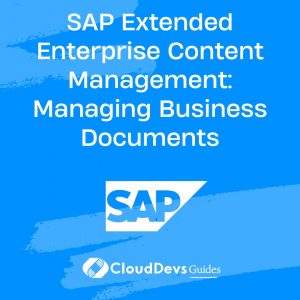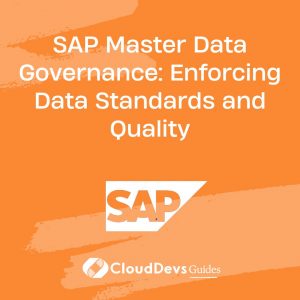SAP PLM: Managing Product Lifecycle from Design to Disposal
In the dynamic landscape of modern business, managing the lifecycle of products efficiently is crucial for sustainable growth and competitive advantage. Enter SAP Product Lifecycle Management (PLM), a comprehensive solution designed to streamline and optimize every stage of a product’s journey, from its inception to disposal.
1. What is SAP PLM?
SAP PLM is a powerful software suite that integrates various functions and processes involved in product development, management, and maintenance. It provides a centralized platform for collaboration, data management, and decision-making, enabling organizations to bring high-quality products to market faster and at lower costs.
2. Key Features of SAP PLM
- Product Data Management (PDM): SAP PLM offers robust PDM capabilities to manage all product-related data, including CAD files, bills of materials (BOMs), specifications, and documents. This ensures consistency, accuracy, and accessibility of information across the entire organization.
- Collaborative Design: With SAP PLM, teams can collaborate seamlessly on product design and development, regardless of geographical locations. Integrated tools facilitate real-time communication, version control, and feedback, leading to faster iterations and improved outcomes.
- Integrated Workflow: The software provides customizable workflows to automate and streamline processes such as approvals, change management, and compliance. This enhances efficiency, transparency, and compliance with regulatory requirements throughout the product lifecycle.
- Quality Management: SAP PLM includes quality management functionalities to monitor and ensure the quality of products at every stage. It facilitates defect tracking, root cause analysis, and continuous improvement initiatives, enabling organizations to deliver superior products that meet customer expectations.
- Sustainability and Compliance: In today’s environmentally conscious world, sustainability and regulatory compliance are paramount. SAP PLM helps organizations integrate sustainability criteria into product design, assess environmental impacts, and ensure adherence to regulatory standards throughout the lifecycle.
3. Examples of SAP PLM in Action
- Automotive Industry: A leading automotive manufacturer utilizes SAP PLM to manage the development and production of its vehicles. From initial design concepts to manufacturing processes and aftermarket support, the software enables seamless collaboration among engineering, manufacturing, and supply chain teams. As a result, the company achieves faster time-to-market, reduced costs, and improved product quality.
Learn more about SAP PLM in automotive industry – https://www.sap.com/industries/automotive.html
- Consumer Goods: A multinational consumer goods company leverages SAP PLM to innovate and launch new products in a highly competitive market. By centralizing product data and streamlining workflows, the company accelerates product development cycles, responds swiftly to market trends, and maintains compliance with regulatory requirements. This strategic use of SAP PLM enhances the company’s agility and competitiveness in the ever-evolving consumer landscape.
Discover how SAP PLM drives innovation in consumer goods industry – https://www.sap.com/industries/consumer-goods.html
- Aerospace and Defense: An aerospace manufacturer relies on SAP PLM to manage complex engineering projects and ensure compliance with stringent industry standards. The software facilitates collaboration among design, engineering, and regulatory teams, enabling the company to deliver cutting-edge aerospace solutions while meeting rigorous safety and quality requirements. With SAP PLM, the manufacturer achieves greater efficiency, visibility, and control over its product lifecycle processes.
Explore SAP PLM solutions for aerospace and defense industry – https://www.sap.com/industries/aerospace-defense.html
Conclusion
In today’s fast-paced business environment, effective management of the product lifecycle is imperative for success. SAP PLM empowers organizations across industries to optimize their processes, enhance collaboration, and drive innovation from design to disposal. By leveraging SAP PLM, companies can stay ahead of the competition, deliver superior products, and meet the evolving needs of customers and markets.
Unlock the full potential of your product lifecycle with SAP PLM and propel your business towards sustained growth and excellence.
Table of Contents









